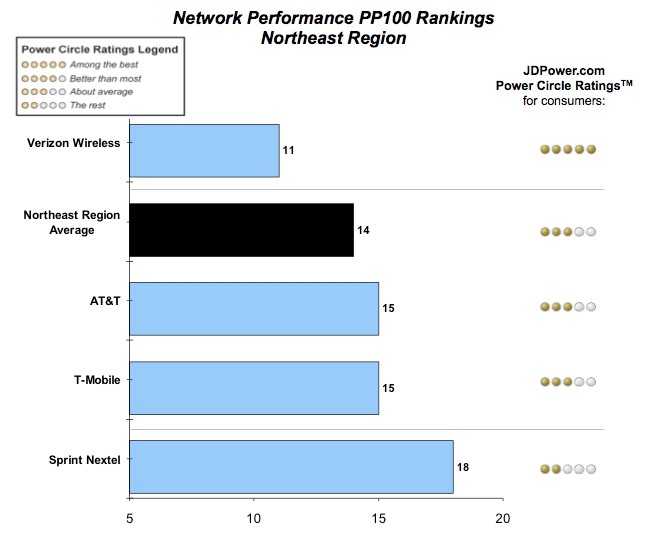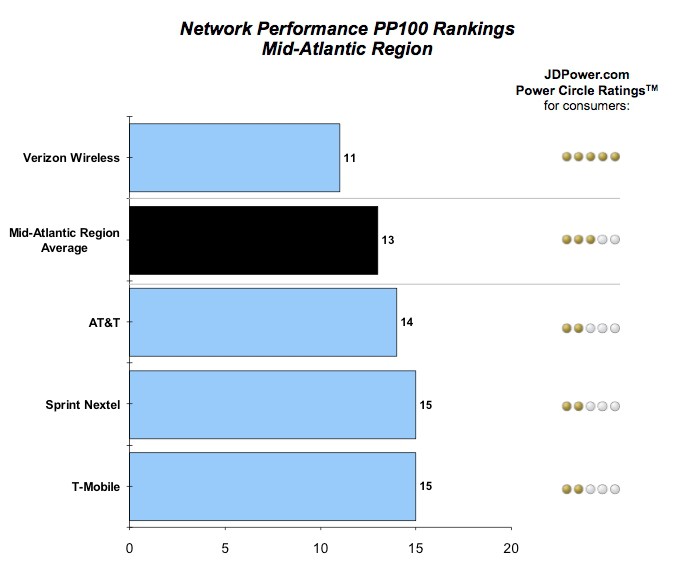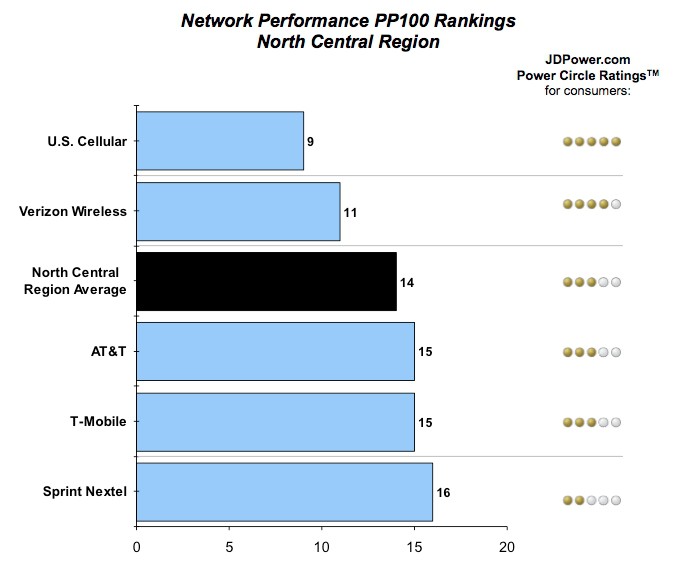 For the 15th time, Verizon Wireless has topped J.D. Power & Associates’ U.S. Wireless Network Quality ratings for best service. Verizon Wireless consistently achieved fewer customer-reported problems with dropped calls, initial connections, transmission failures and late text messages, compared with other carriers, with one exception — U.S. Cellular, and only in the north-central part of the country.
For the 15th time, Verizon Wireless has topped J.D. Power & Associates’ U.S. Wireless Network Quality ratings for best service. Verizon Wireless consistently achieved fewer customer-reported problems with dropped calls, initial connections, transmission failures and late text messages, compared with other carriers, with one exception — U.S. Cellular, and only in the north-central part of the country.
J.D. Power found variations in network performance regionally, with carriers changing rankings depending on their infrastructure in different areas of the country. For instance, AT&T came in second in most regions of the country, except in the north-central region where they landed third, and in the western U.S. where they ranked dead last.
T-Mobile and Sprint traded last place positions in different parts of the country as well. Sprint performed more poorly in the northeast, north-central, and southeast, while T-Mobile did worse in the southwest and mid-Atlantic regions. But the German-owned carrier achieved second place in the western states.
J.D. Power reports problems with wireless carrier quality were on the increase in 2011, driven primarily by issues with data services including mobile Web and email.
The increase in data-related problems may be attributable to shifts in where wireless customers are using their devices and in the types of services they are accessing.
“The ways and places wireless customers use their devices have changed considerably during the past several years,” said Kirk Parsons, senior director of wireless services at J.D. Power and Associates. “For instance, in 2012, 58 percent of all wireless calls are made indoors – where wireless connections can be harder to establish and maintain – compared with only 40 percent in 2003. In addition, the rapid expansion of smartphone usage has also changed the ways in which wireless customers use their devices, which also impacts network quality.”
“Based on varying degrees of consistency with overall network performance, it’s critical that wireless carriers continue to invest in improving both the voice quality and data connection-related issues that customers continue to experience,” said Parsons.


 Subscribe
Subscribe






